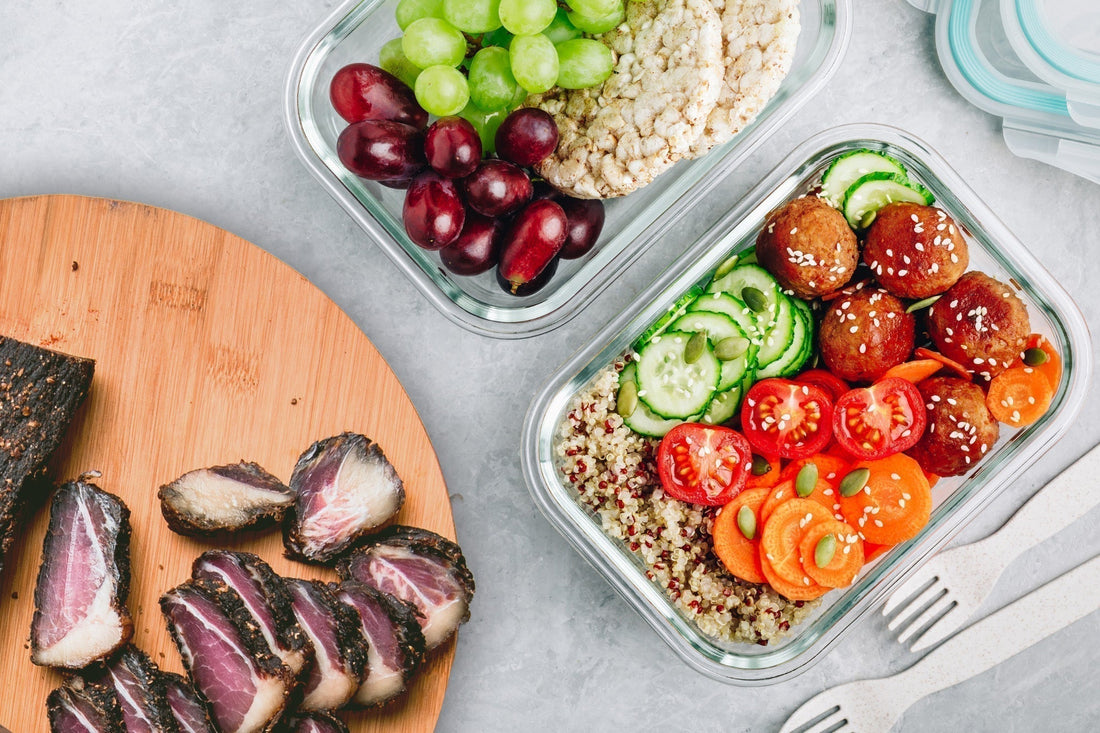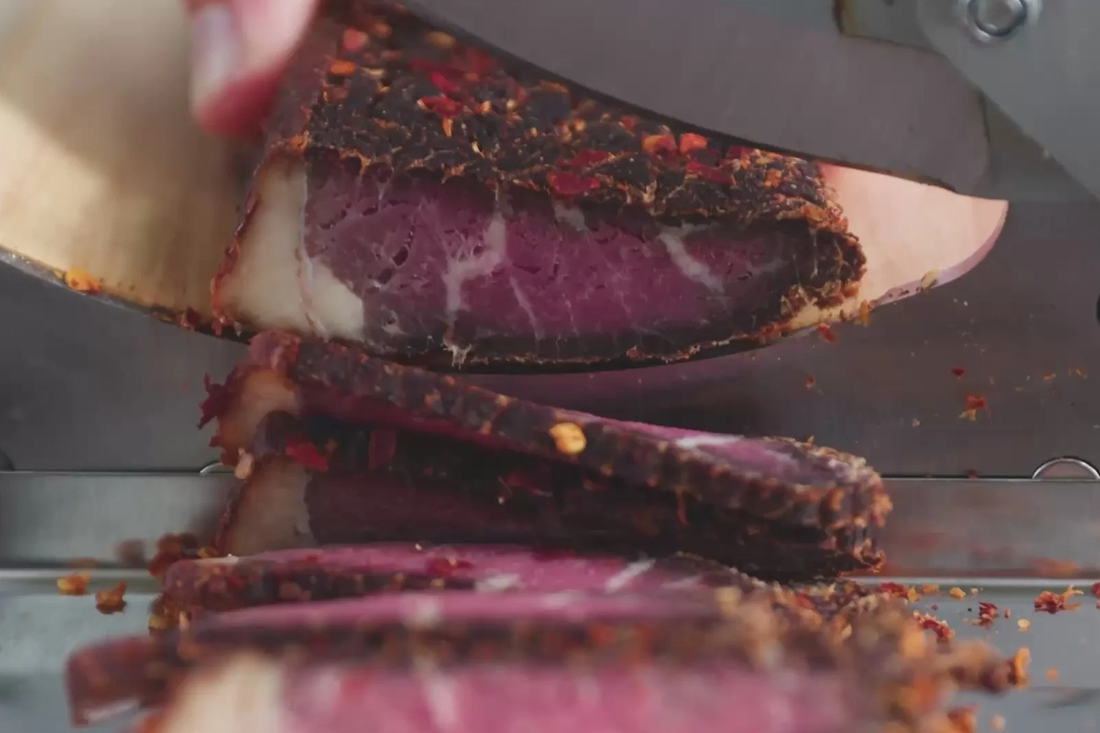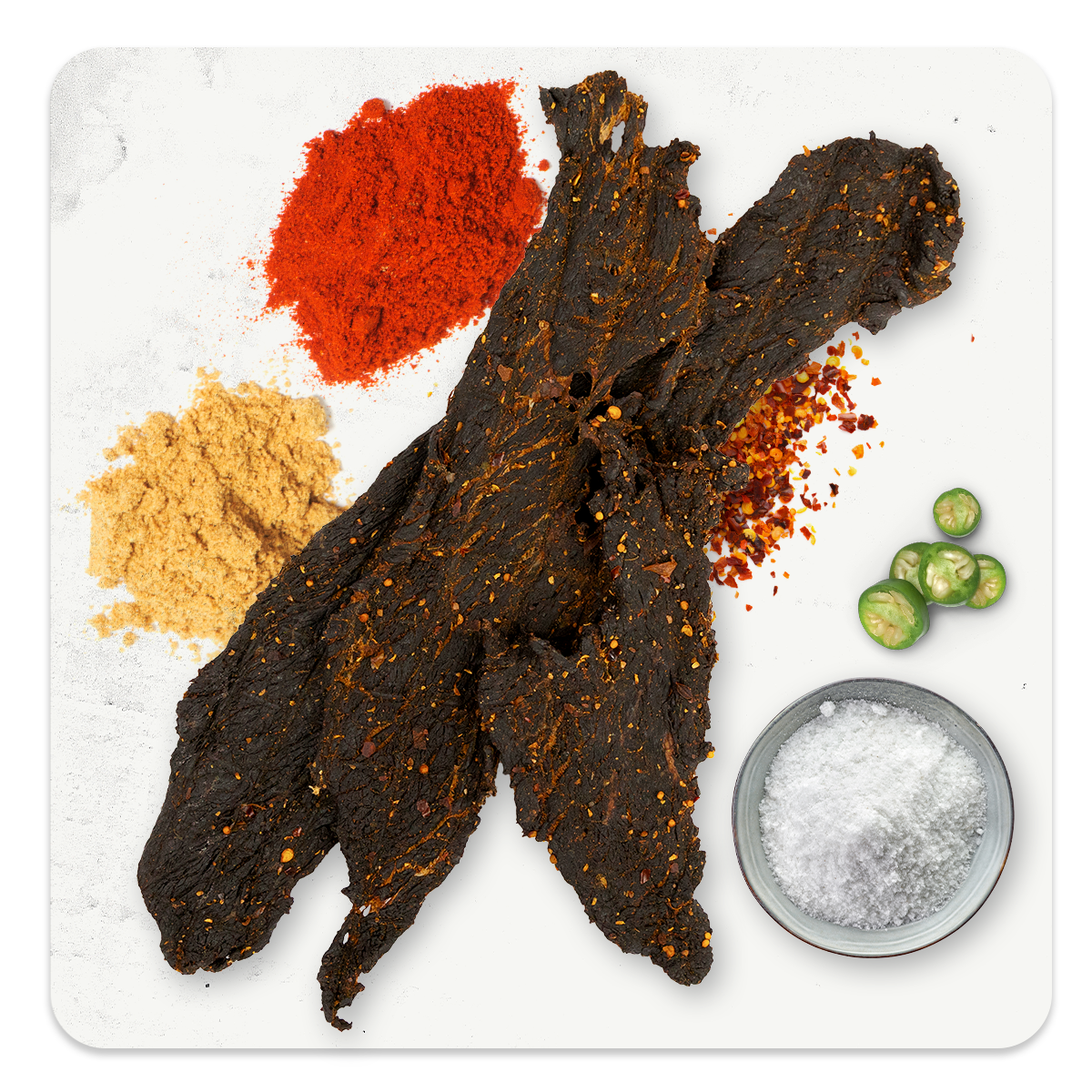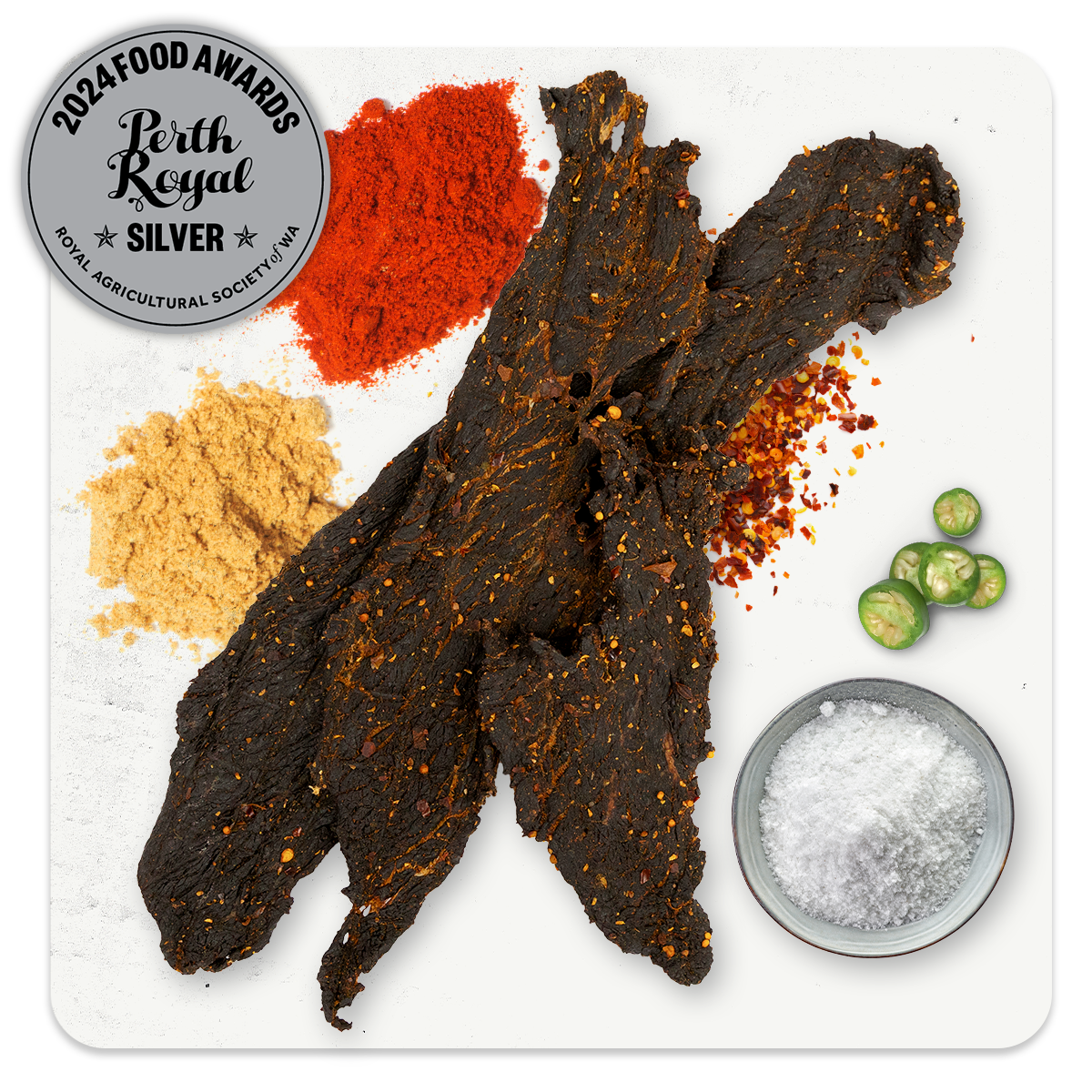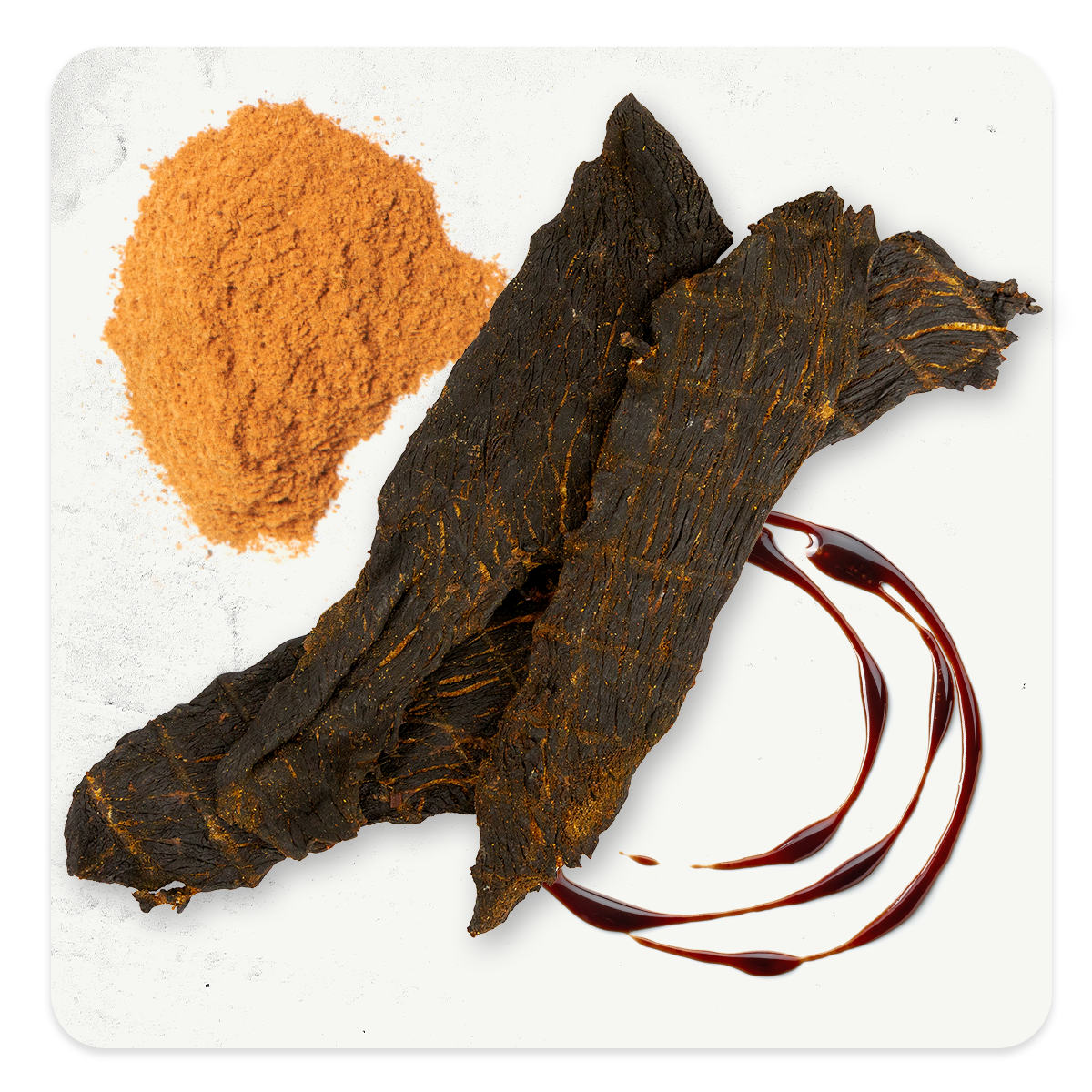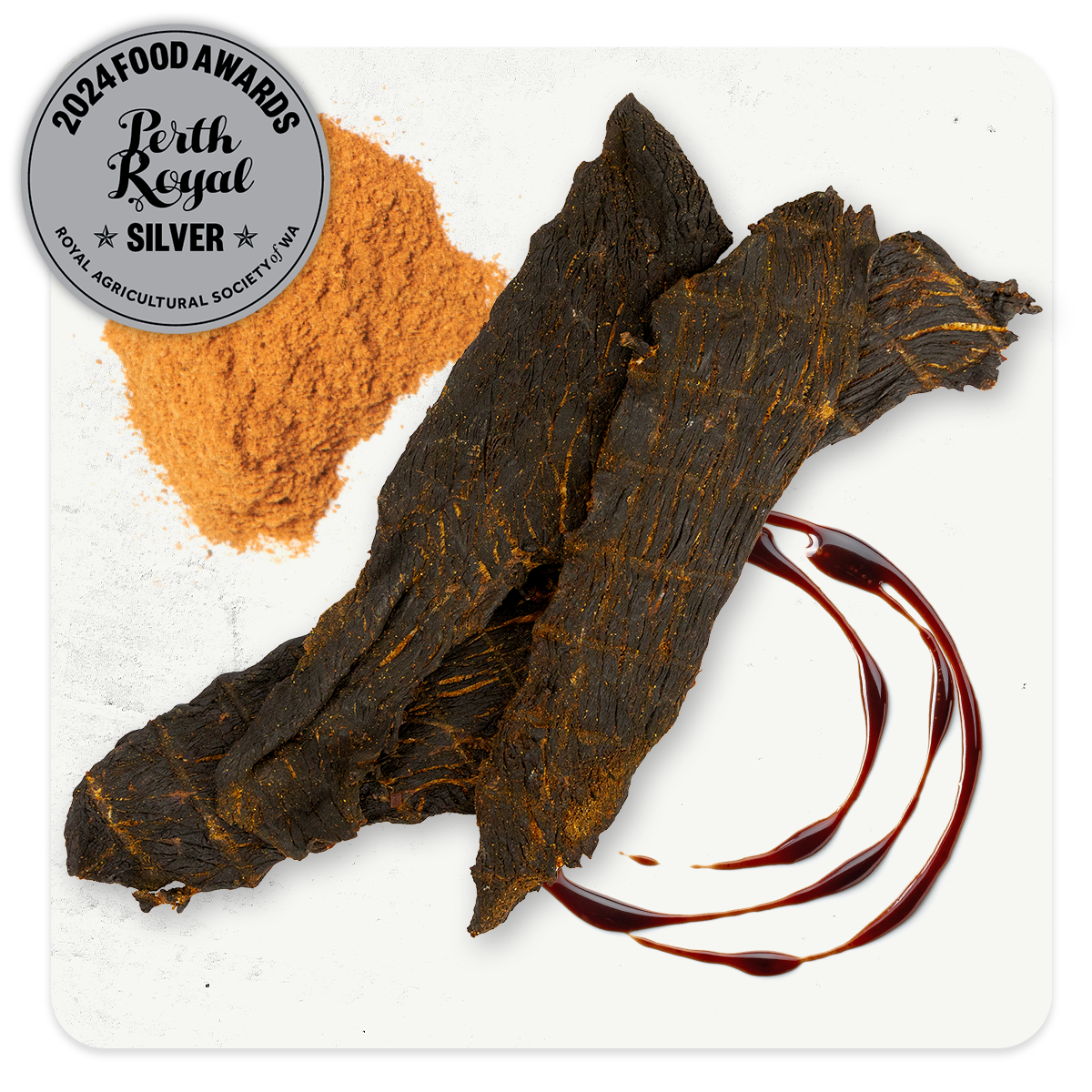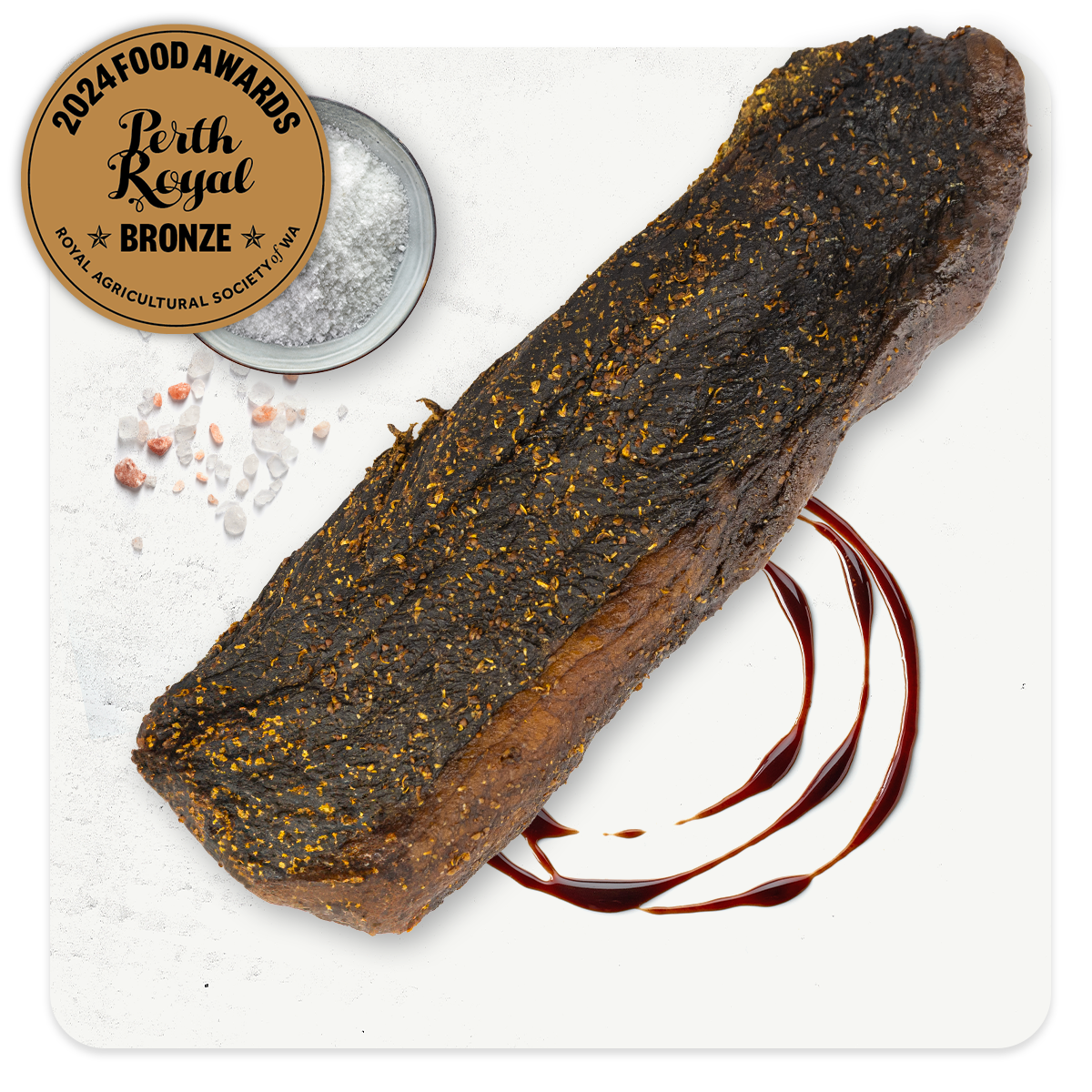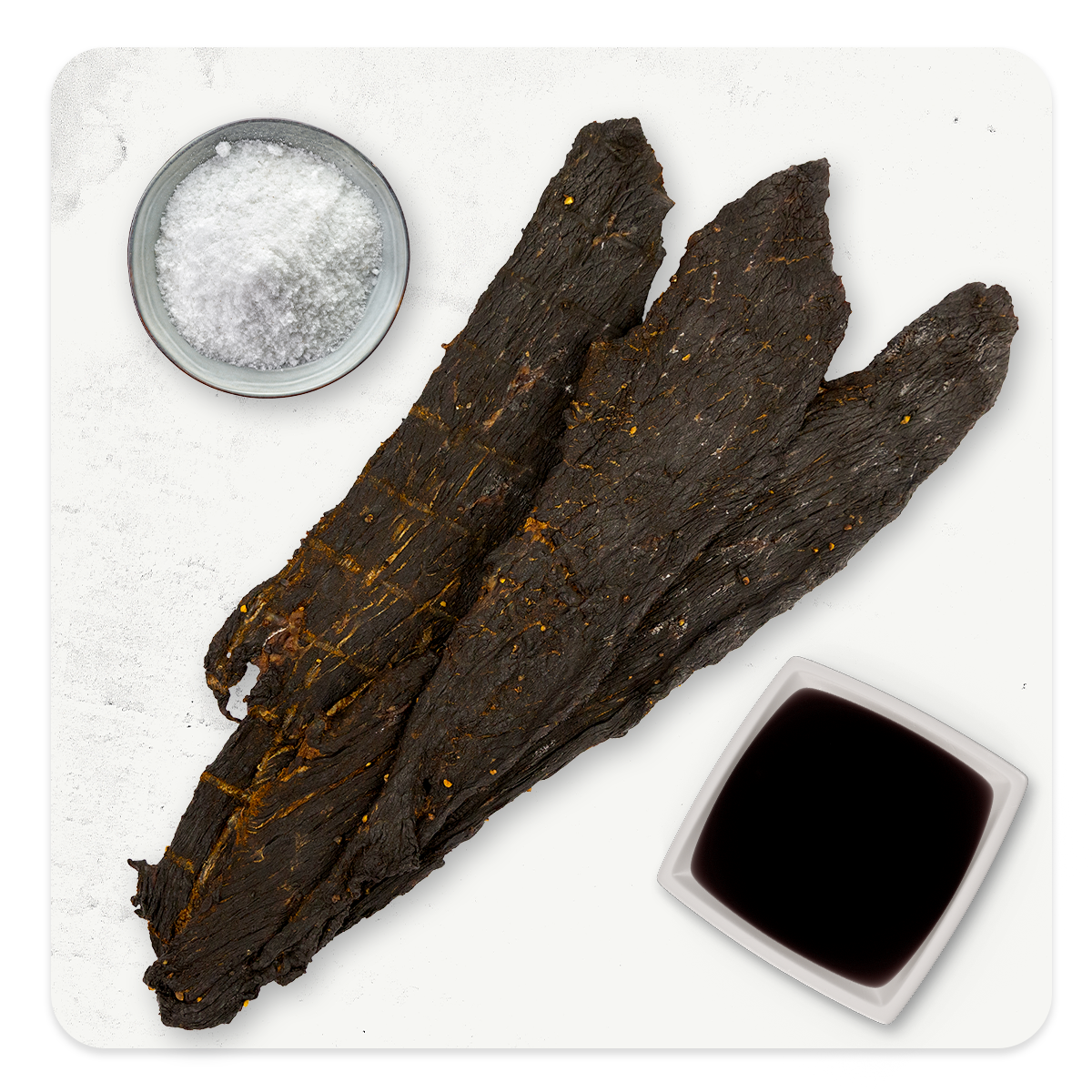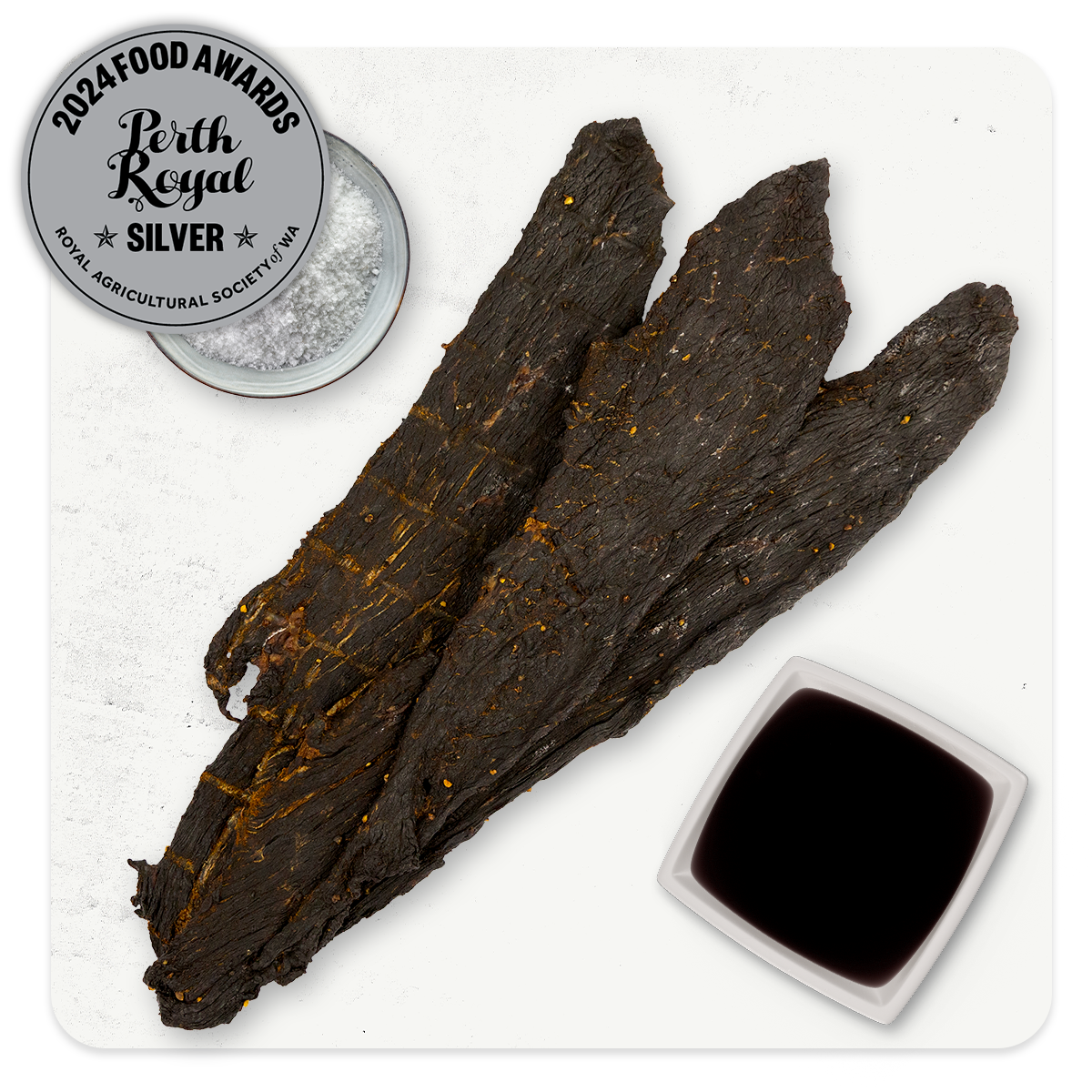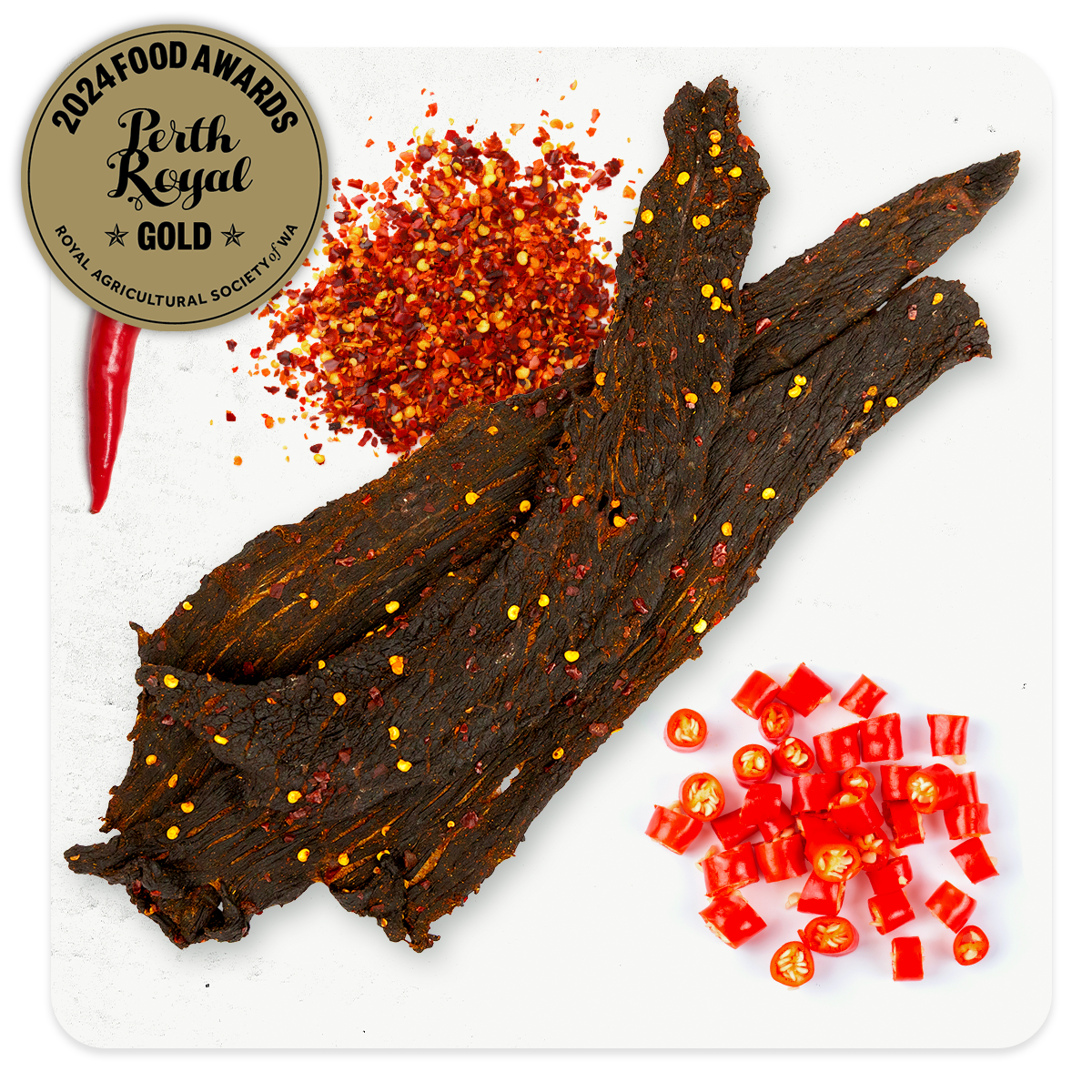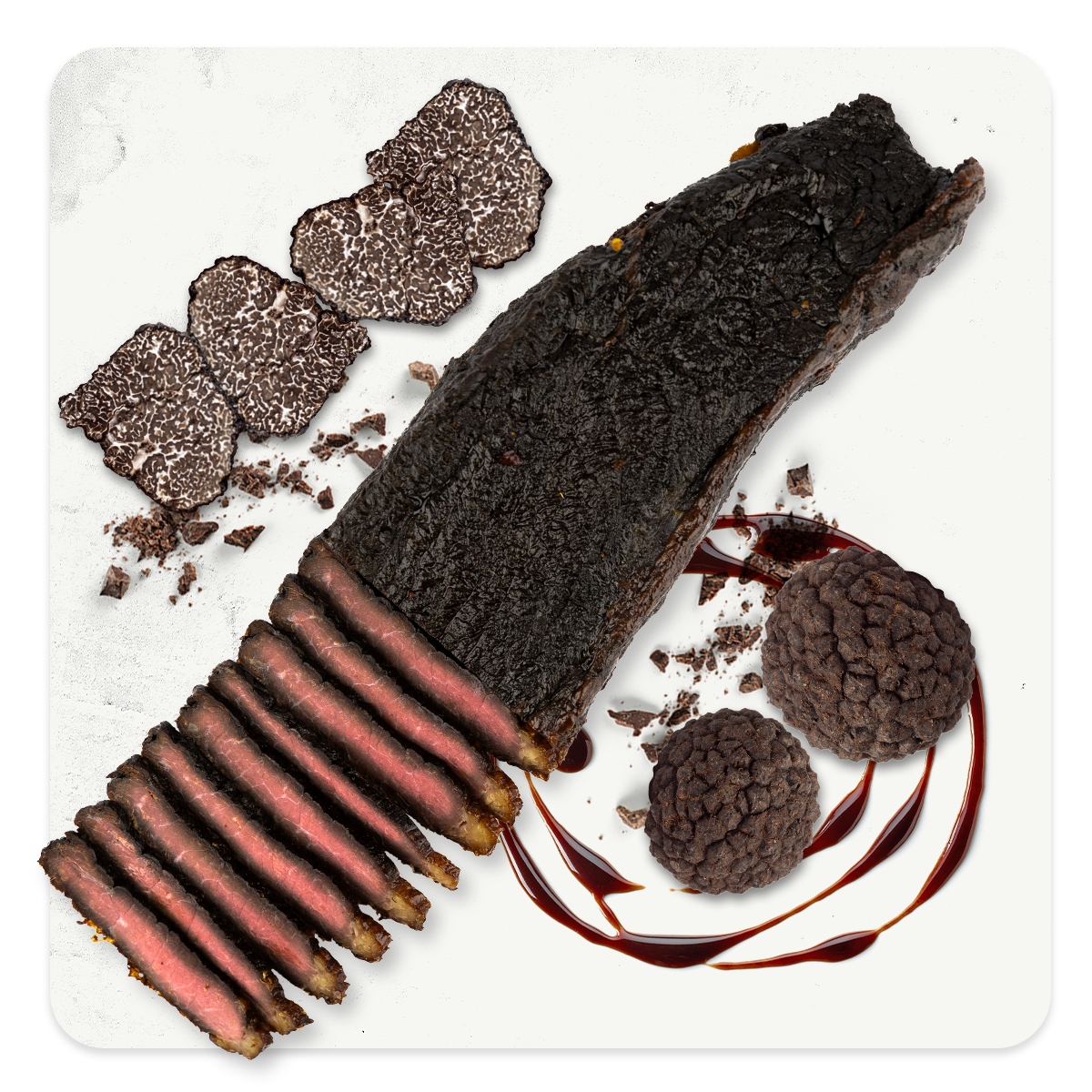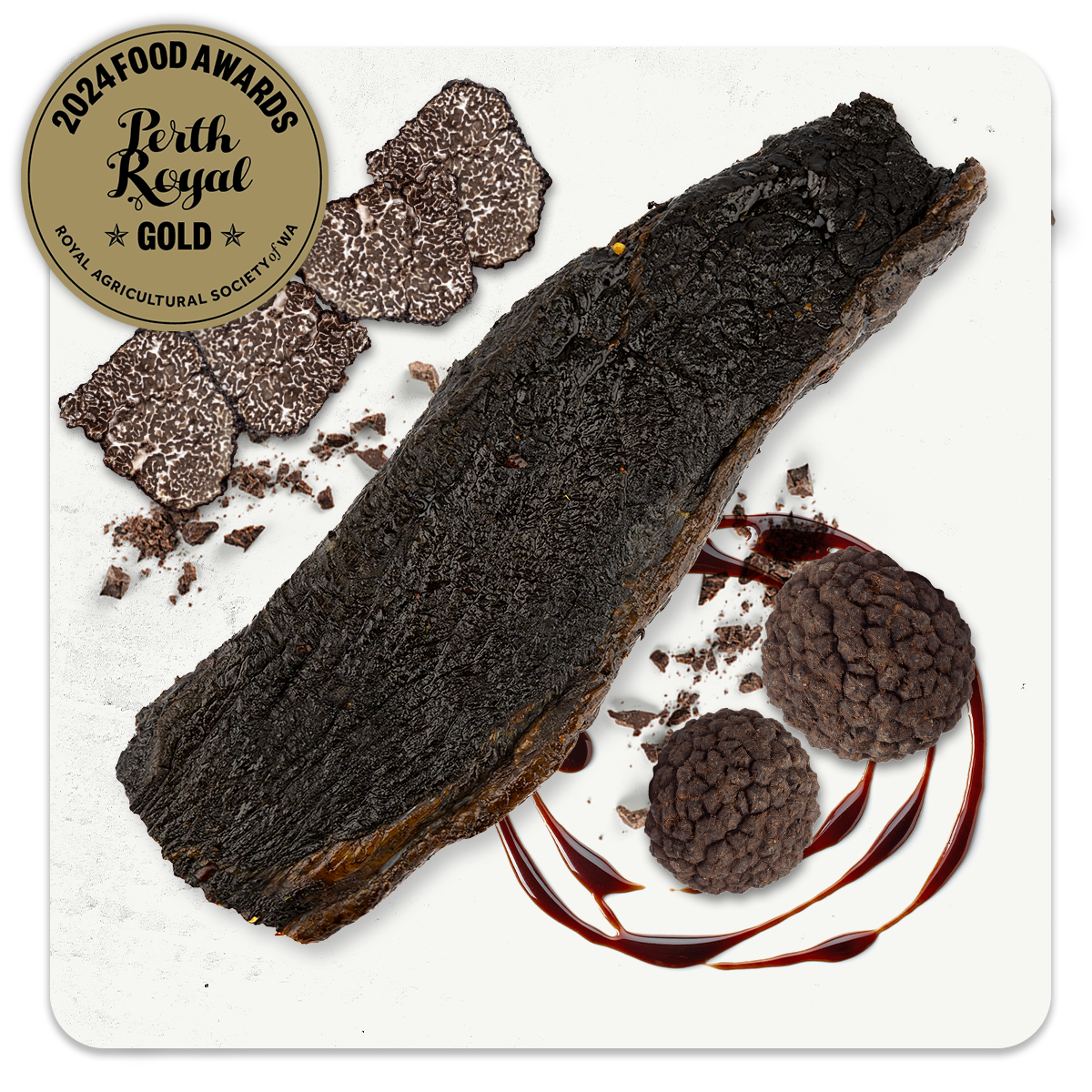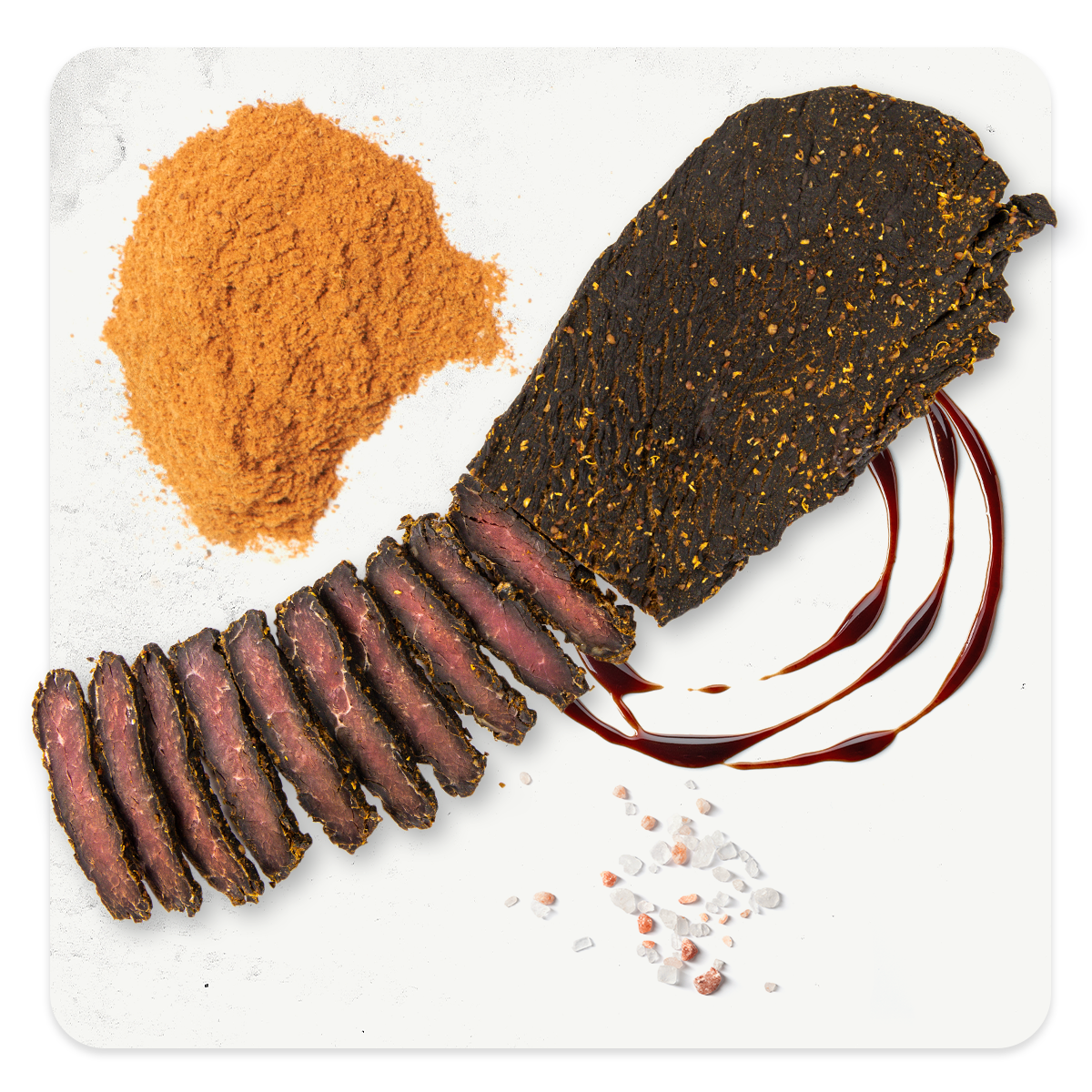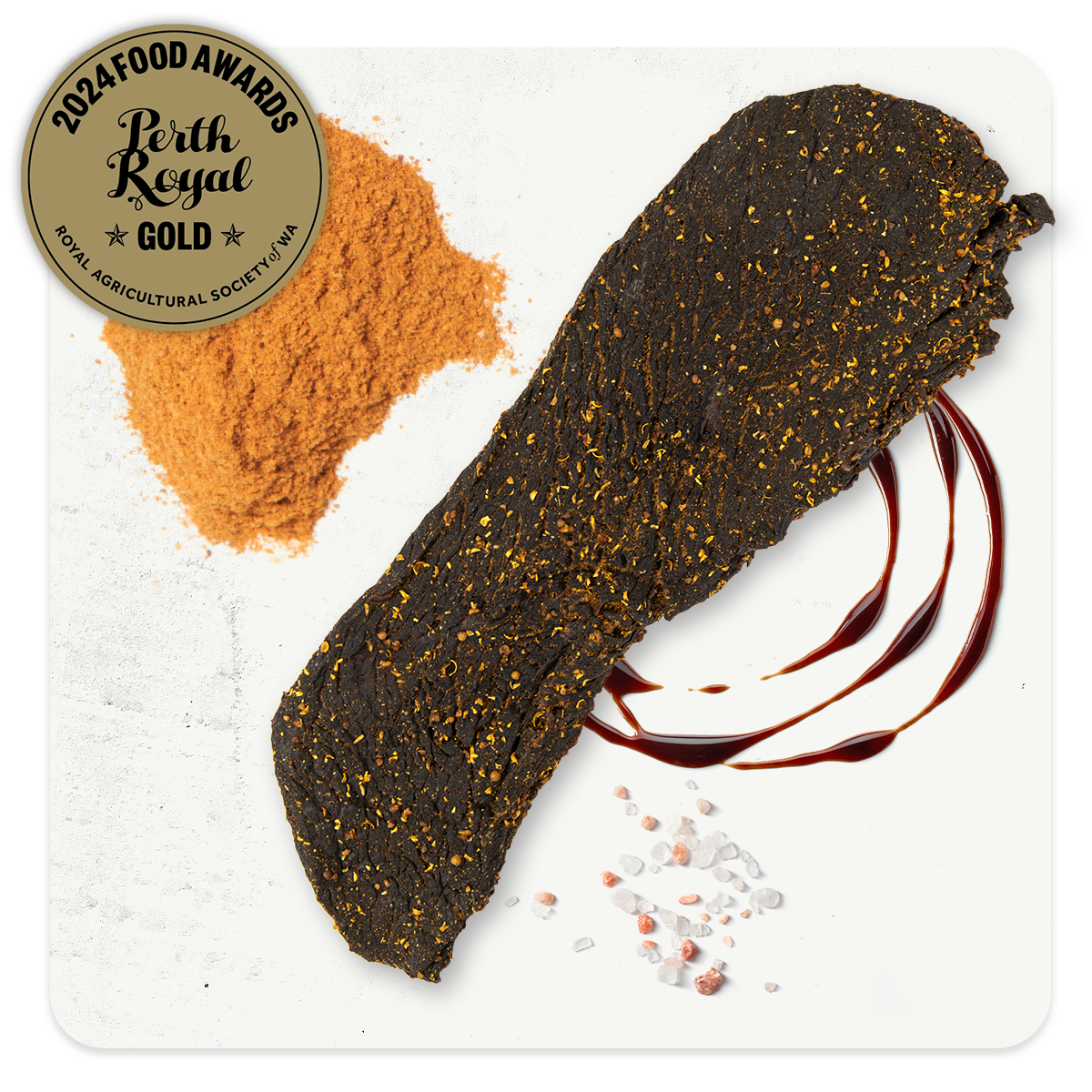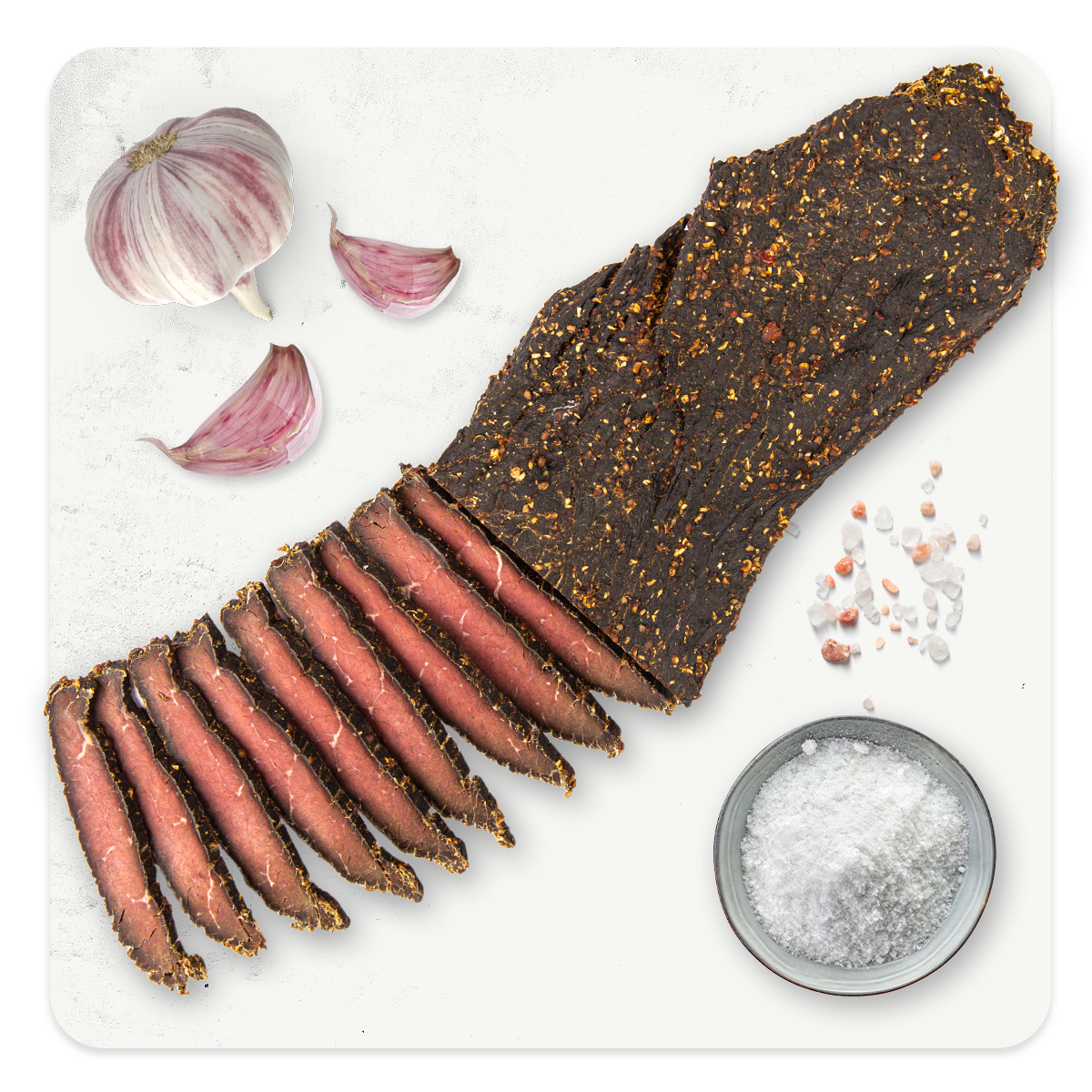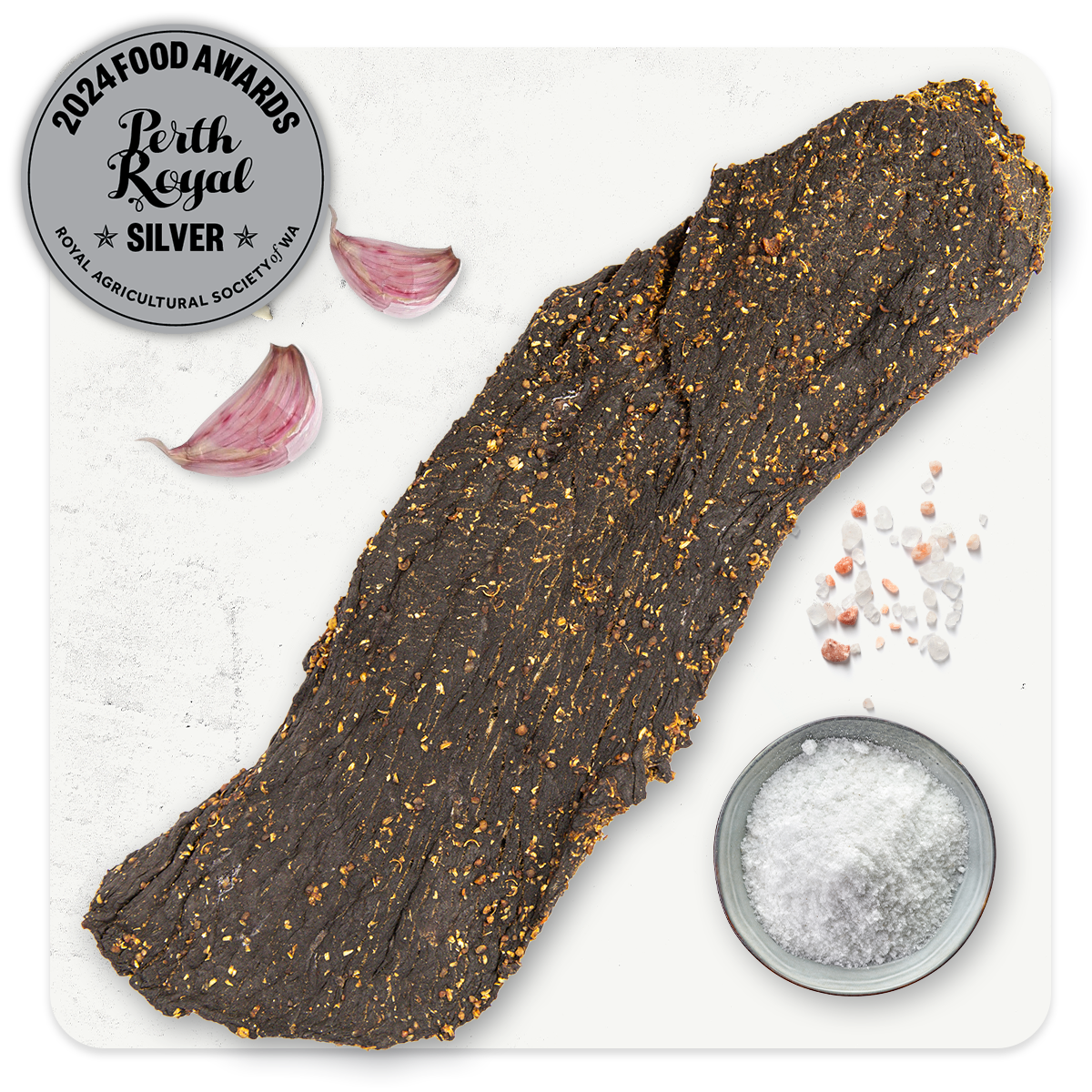Ever wondered what the real deal is when it comes to biltong vs beef jerky? You’re not alone. These two snack legends might look similar, but they’re worlds apart in how they’re made, how they taste, and how they fit into your snacking routine.
In this guide, we’ve broken it all down in a way that’s easy to chew through (pun intended). From drying techniques to nutritional perks and flavour profiles, this guide will help you pick your snack side... or just enjoy both like a true legend.
Quick comparison: biltong vs beef jerky
|
Feature |
Biltong |
Beef Jerky |
|
Origin |
South Africa |
Americas (Native American, Incan, global variations) |
|
Drying Method |
Air-dried whole cuts |
Sliced and air-dried (oven or dehydrator) |
|
Marinade Base |
Vinegar, salt, and spices |
Soy sauce, sugar, worcestershire, and spices |
|
Texture |
Tender, steak-like, can be moist |
Chewy, firm, often drier |
|
Flavour Profile |
Rich, savoury, tangy |
Depends on marinade (usually sweeter) |
|
Protein (per 100g) |
~43g (Traditional Biltong) |
~55g (Traditional Beef Jerky) |
|
Shelf Life |
Shorter due to moisture content |
Longer due to lower moisture |
|
Best For |
Gourmet snacking, charcuterie, low-carb diets |
On-to-go energy, gym bags, long storage |
The cultural origins: Where it all began
Biltong: A South African tradition
What is biltong?

Biltong is a traditional South African air-dried meat snack made from beef or game meat. It’s typically marinated in vinegar and spices, then hung to dry slowly over several days — giving it a tender texture and rich, savoury flavour.
How it all started
Biltong dates back to the 1600s in South Africa. The name comes from the Dutch words “bil” (rump) and “tong” (strip). Long before fridges, Indigenous people were curing meat with salt and hanging it to dry in the sun — a pretty genius way to stay fed on long journeys. When European settlers arrived, they added vinegar and spices to the mix, and that’s when biltong as we know it really took shape.
At The Jerky Co, we keep the tradition alive but with our own Aussie twist. Our biltong is made from premium MSA-grade beef (or lamb biltong, if you’re feeling fancy), marinated for over 24 hours, then air-dried to perfection.
We’ve got a whole blog dedicated to the origin of biltong right here if you're keen for the full story.
Beef jerky: Born around the world
What is beef jerky?

Beef jerky is a dried meat snack made by marinating thin strips of beef in seasoning, then slowly drying or cooking them at low temperatures. It’s typically chewier than biltong and comes in a range of flavours depending on the marinade.
How it all started
Jerky’s got a few more stamps in its passport.
Native American tribes were drying buffalo meat mixed with berries and fat long before European settlers arrived. Ancient Egyptians dried meat under the hot sun, and even the Romans had their own versions made from horse or donkey (we’ll stick to beef, thanks).
The word “jerky” comes from the Quechua word “ch’arki”, meaning “dried, salted meat.” Over time, the process evolved (especially in the Americas), where it became a staple trail food for travellers, explorers, and eventually everyday snackers.
These days, jerky’s gone gourmet. At The Jerky Co, we use premium Aussie beef, soak it in bold marinades for over 24 hours, then air-dry it for that perfect chewy texture and mouth-watering flavour.
If you’d like to learn more about jerky’s journey through history, check out our full blog on the history of beef jerky.
Preparation methods: How they’re made
Biltong preparation: Slow, traditional, and air-dried
Biltong is made by marinating whole cuts of meat in vinegar and spices, then hanging them to slowly air-dry over several days. This drying process keeps the centre tender and preserves more of the meat’s natural nutrients.
The Jerky Co take
Our biltong starts with MSA-grade Aussie beef or lamb, marinated for over 24 hours in a rich mix of vinegar, herbs, and spices. Then we hang the whole steak (no slicing just yet) and let it air-dry low and slow. This results in a pocket-sized steak with a tender, flavour-packed bite.
You can grab it sliced or unsliced, lean or fatty, and in many flavours — depending how serious your snack cravings are.
Beef jerky preparation: Thin, fast, and chewy
Beef jerky is made by slicing lean meat into thin strips, marinating it (usually in soy sauce or sugar-based sauces), and then drying it at low heat (often in ovens or dehydrators) over several hours.
The Jerky Co take
We use 100% MSA grade Aussie beef, sliced into thin slabs and soaked in our house marinades for a full 24 hours. Then it’s air-dried (yep, we skip the artificial heat) for a chewy finish that’s packed with bold flavour and perfect for on-the-go.
Jerky tends to have less moisture than biltong, giving it a longer shelf life, which is perfect for road trips, work snacks, or emergency meat stashes in your glovebox.
Taste and texture: What you’ll actually chew on
Biltong: Soft, savoury, and steak-like
Biltong is tender, juicy, and packed with rich, meaty flavour. Because it’s air-dried as a whole steak and sliced after, it keeps that soft centre with just the right amount of chew. The vinegar-based marinade adds depth without overpowering the natural beefiness, and the result is more like a cured steak than your typical dried snack.
Beef jerky: Chewy, bold, and loaded with flavour
Beef jerky is all about that satisfying chew. It’s sliced thin before drying, which gives it a firmer, drier texture. Our jerky is marinated for 24 hours in bold, flavour-loaded blends, then air-dried to lock it in. Flavours like our Texan, Sweet BBQ, and Chilli bring serious personality (and make it hard to stop at just one strip).
Nutritional differences: What are they packed with?
When it comes to biltong vs beef jerky, the nutrition side really depends on how it’s made (and what’s added). But if you’re comparing apples to apples (or in this case, beef to beef), here’s how our two Traditional cuts stack up per 100g.
|
Nutrient (100g) |
||
|
Energy |
909 kJ (217 calories) |
1210 kJ (290 calories) |
|
Protein |
43.4g |
54.8g |
|
Total Fat |
2.7g |
2.6g |
|
Saturated Fat |
1.3g |
1.4g |
|
Carbohydrates |
4.2g |
10.7g |
|
Sugars |
<1g |
6.2g |
|
Sodium |
1600mg |
3700mg |
It’s worth noting: these numbers shift depending on the flavour, spice level, and fat content. But across the board, both options deliver high-protein, low-fat snacking without the preservatives, MSG, or artificial nasties you’ll find in supermarket brands.
When to pick what
Pick biltong if you want…
- A soft, steak-like chew
- Low sugar and carbs
- Big flavour with fewer additives
- Something that feels a bit more “gourmet”
- A snack that works on a charcuterie board, in a salad, or straight from the bag
Pick beef jerky if you want…
- A chewy, bold, flavour-packed snack
- Higher protein per gram
- Longer shelf life (great for road trips, gloveboxes, or gym bags)
- Classic flavours that hit hard
- Something that’s satisfying without being too rich
Of course, if you're like us — you'll probably just keep biltong and beef jerky both stocked. One for the car, one for the fridge, one for the snack drawer... you get the idea.
So.. who wins? You tell us.
Still torn between biltong and beef jerky? There’s only one way to settle it (and that’s by trying them both).
Explore our full range of biltong and beef jerky online and get it delivered fresh to your door, anywhere in Australia. Or skip the wait and use our store locator to find your nearest Jerky Co stash!



